Sony MZ-RH1 Review: What's the True Meaning of MiniDisc?
By Cory W
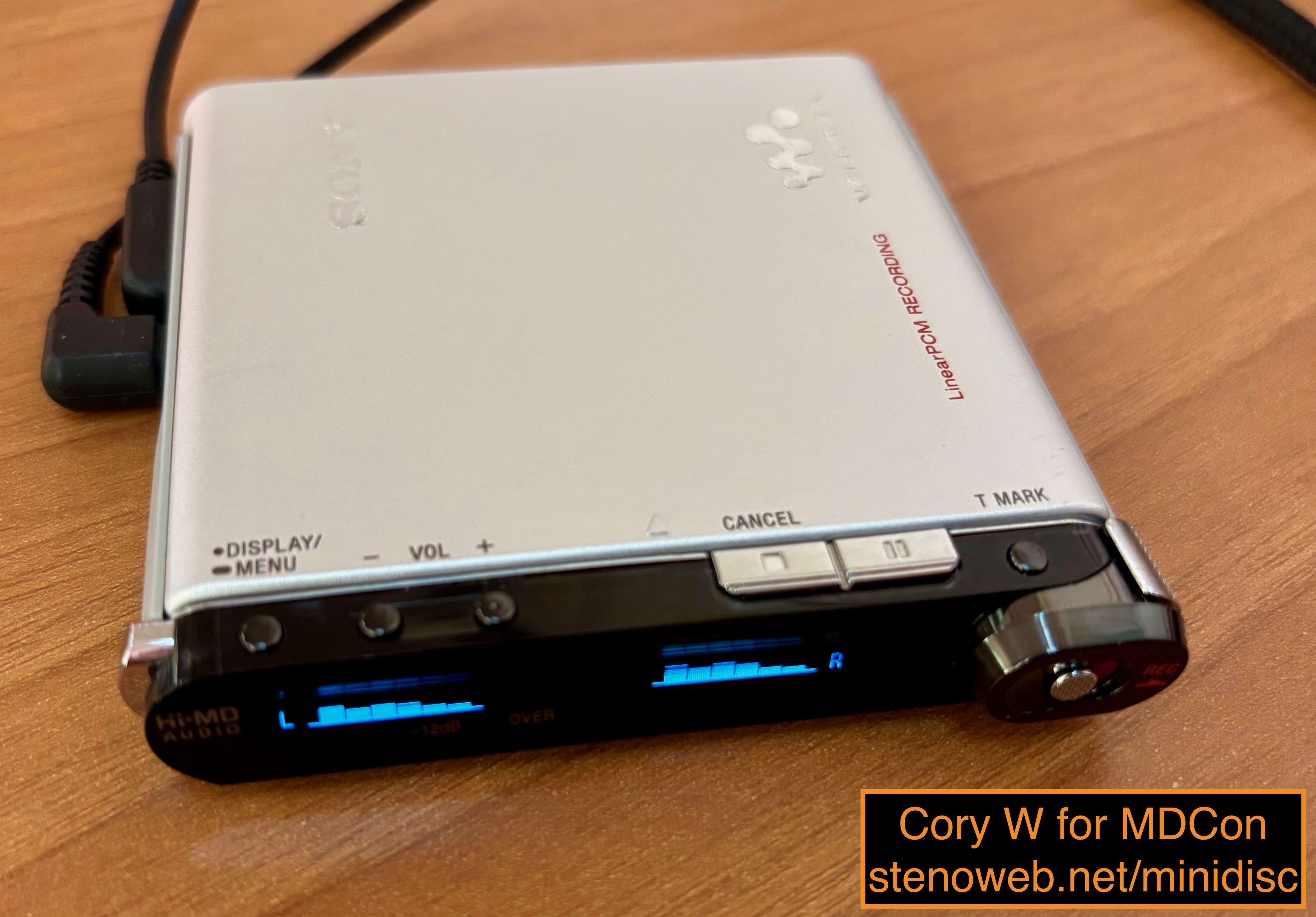
The Sony MZ-RH1 is a tough machine to review. Maybe not because it's a particularly complicated machine, or because it's out-of-this-world good or bad.
I borrowed an RH1 whose screen has been repaired using Sir68k's replacement kit from a friend and used it almost completely exclusively for roughly a month to produce this review.
Direct Link To Installation Video by Technical Initiative
On the contrary, the RH1 is thoroughly mid. At it's core, it's a competent-but-mid MP3 player from 2006, when MP3 players at every imaginable price point were common, improving rapidly, and when the software ecosystem could make or break a machine.
But, not only is the RH1 also a MiniDisc recorder, it's the last new portable one from Sony, and it has for the time one singularly unique capability: The ability to rip audio on classic-mode MiniDiscs back to computer.
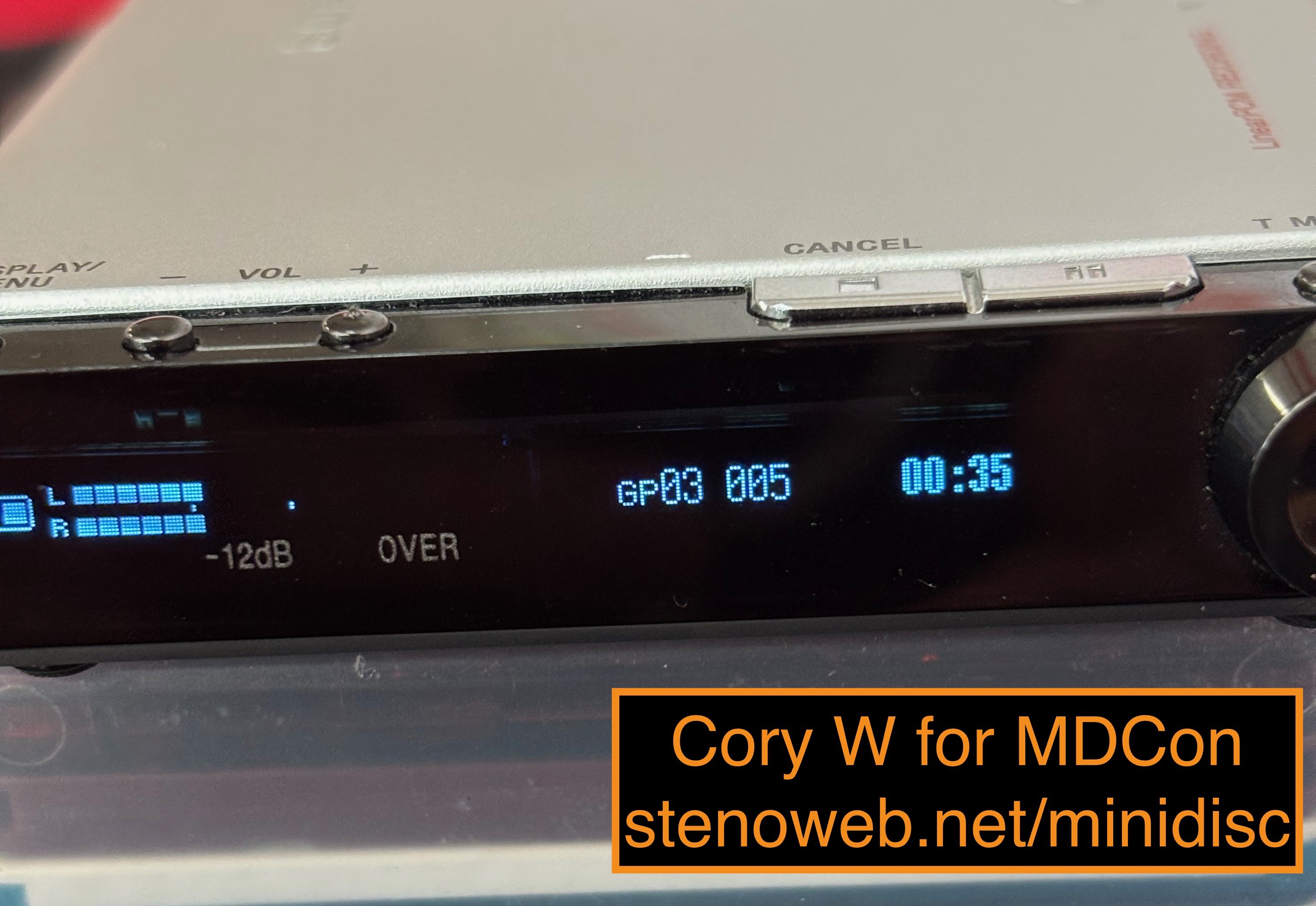 The RH1 was introduced in mid-2006 with ripping being the headlining feature. Sony then proceeded to say pretty much nothing about the future of the format until discontinuing the RH1 itself in 2011, and then all it's own other hardware in 2013.
The RH1 was introduced in mid-2006 with ripping being the headlining feature. Sony then proceeded to say pretty much nothing about the future of the format until discontinuing the RH1 itself in 2011, and then all it's own other hardware in 2013.
Here in the modern environment, many of what would have been the RH1's biggest strengths in 2006, such as being a HiMD machine with 1-gig discs costing $7 each at the time, that can also play MP3s (it is, literally, an MP3 player, in every available sense) the near infinite flexibility of different MP3 and ATRAC3plus modes on HiMD-formatted discs and the OLED display, and the ability to rip discs, end up being liabilities rather than strengths.
Interest in physically oriented media and music formats is on the rise. CDs, vinyl, and cassettes are all on the rise. In that environment, HiMD has got an interesting dynamic because it is very, almost painfully, computer dependent and file-oriented. HiMD is more like an iPod than like a physical recording format from 1992.
Rather than having a set number of minutes, and perhaps a couple modes, HiMD-mode discs allow for near-infinite internal flexibility, and are measured in megabytes and when using a computer to transfer audio, you can use uncompressed, one of eight separate ATRAC3 modes, and of course, the RH1 supports MP3s as well. You can use the 1-gig discs or you can re-format older discs to "about 250 megabytes". (Recording Length Guide)
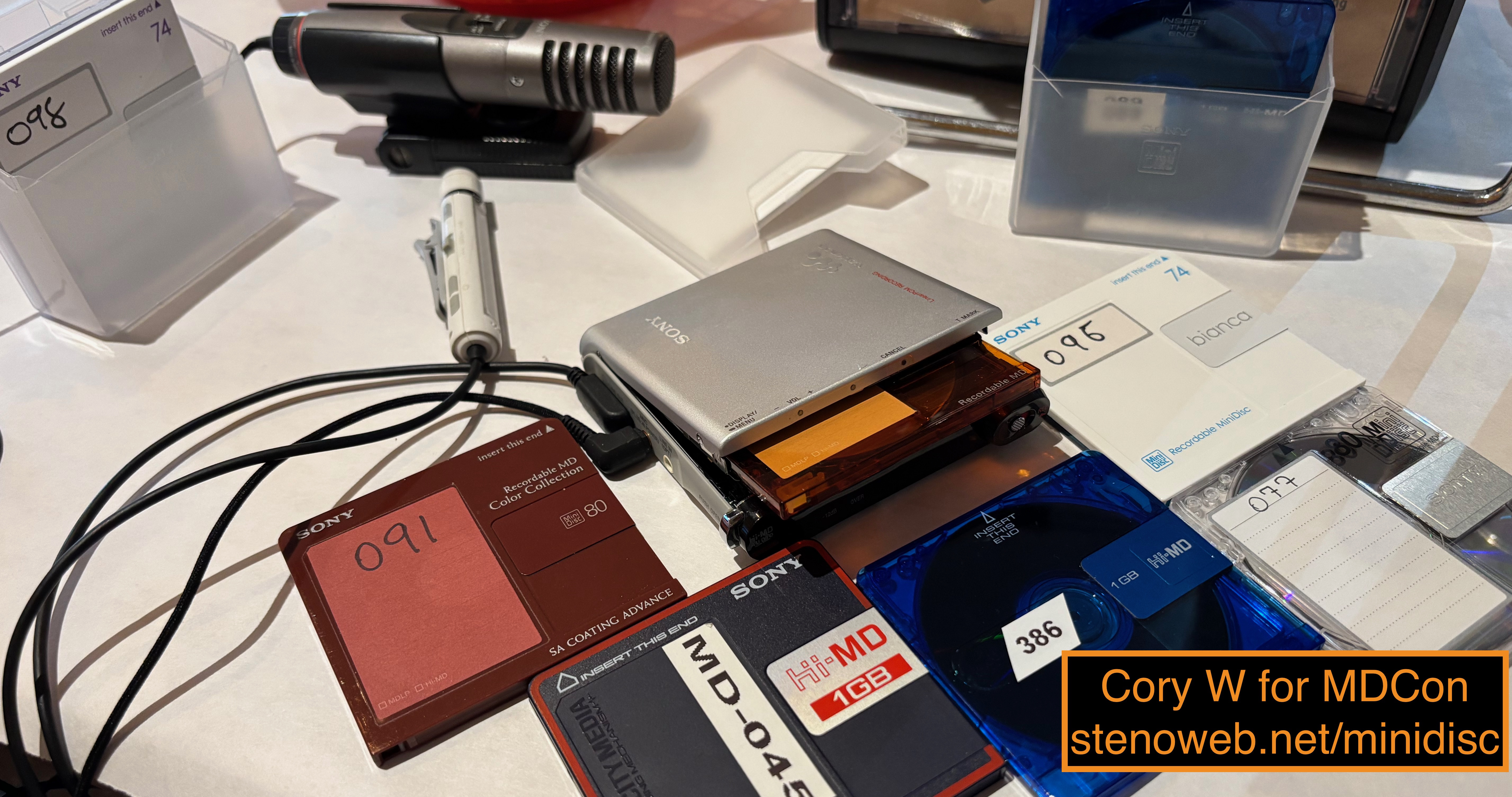
At shortest, a re-formatted MD60 can house 21 minutes of uncompressed audio. At longest, a 1-gig disc will house 45 hours of ATRAC3plus at 48 kilobits, which to it's credit sounds better than most other lossy codecs do at 48 kilobits. There's nearly infinite flexibility within those two extremes.
Unless you go out of your way to use the highest bit-rate modes, regardless of whether or not you can hear it, organizing what's on discs is is an exercise in either strategically planning ahead, or trial and error. Perhaps you're already skilled at managing the contents of several small iPods, several small SD cards at once, but it's not something I ever got good at. I'm not aware of almost anyone who ever bothered having multiple SD/CF players or treating them as removable.
None of that is per se about the RH1 specifically. It all applies to every HiMD machine, it's the fundamental nature of all HiMD machines: They're weird MP3 players that use Minidiscs instead of flash or hard disks as their storage.
If you remember MP3 CDs, you can kind of imagine the vibe, except CD-Rs cost pennies and 1-gig MDs are now around $30.
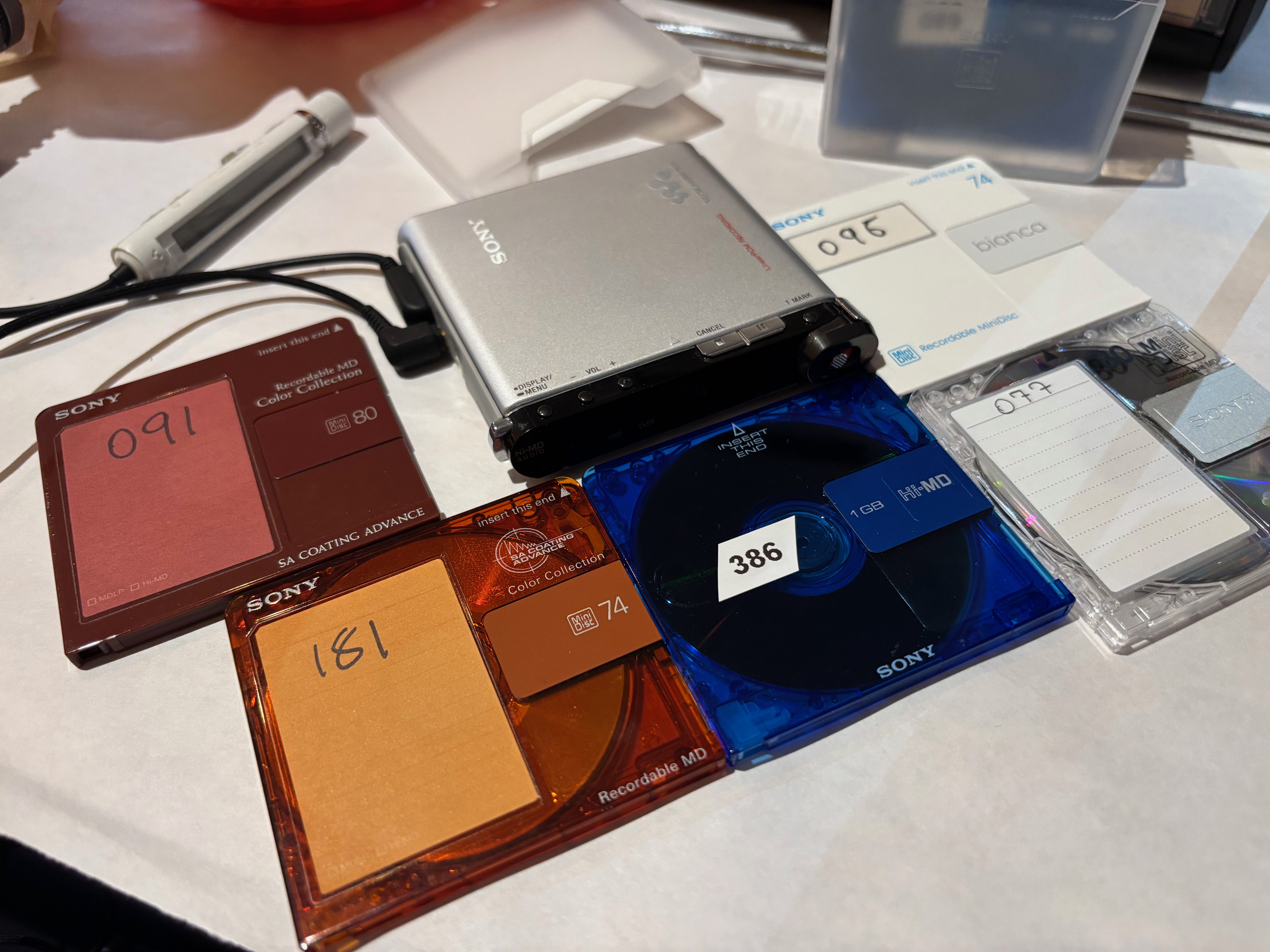
What about the RH1 itself?
It's a well-executed "mid", at best.
The sound quality is fine. It has the HD Digital Amplifier, but so do almost a dozen other machines. People ask regularly about the HD Digital Amplifier, its main improvement is lower noise floor at low volumes, so it should really only make a difference if you're using extremely sensitive IEMs. You won't be able to hear it on over-the-ear headphones or any standard earbuds you can buy at Best Buy. But it still sounds very good on my headphones, as well as on my home speakers, and in my car.
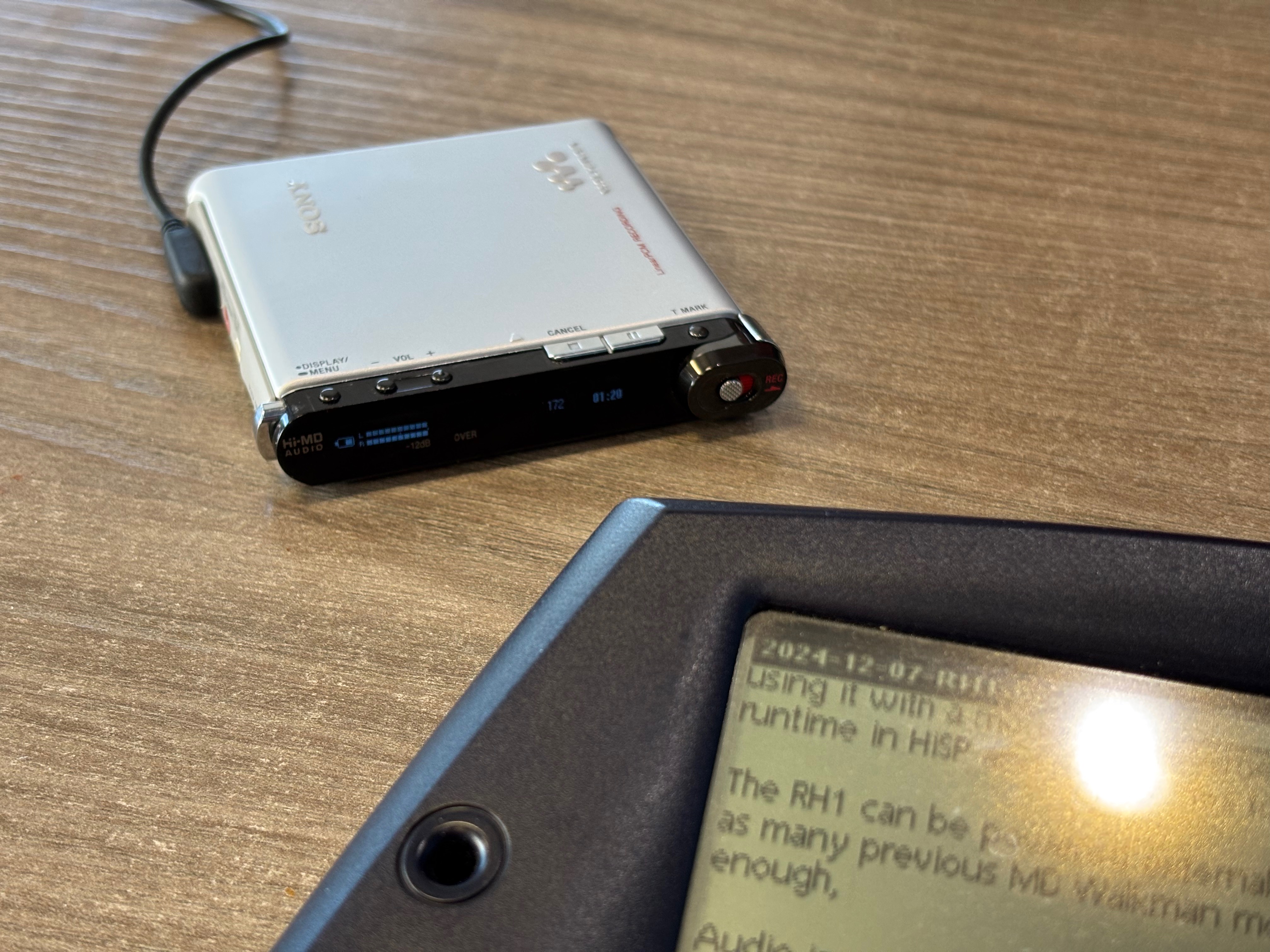 In terms of codecs and sound quality: ATRAC3 and ATRAC3plus, especially when using a Sony computer encoder such as the one in SonicStage, ElectronWMD or Web MiniDisc Pro sound good. HiSP (ATRAC3plus at 256kbit) sounds good whether recorded live or burned from software. At very low bitrates, computer software can produce a better overall result, but on good headphones or speakers it's noticeable that the audio is compressed. Still, it sounds better than a 64-kilobit MP3 might.
In terms of codecs and sound quality: ATRAC3 and ATRAC3plus, especially when using a Sony computer encoder such as the one in SonicStage, ElectronWMD or Web MiniDisc Pro sound good. HiSP (ATRAC3plus at 256kbit) sounds good whether recorded live or burned from software. At very low bitrates, computer software can produce a better overall result, but on good headphones or speakers it's noticeable that the audio is compressed. Still, it sounds better than a 64-kilobit MP3 might.
The RH1's physical design is distinctive. It looks good sitting on a table, but it's easily not only the worst minidisc machine to use on the go, including machines significantly older and bigger than it, but the worst portable audio gadget I've used as a personal music player, in terms of its controls and the ability to reasonably control it with the directly onboard controls, or review information on the screen.
The onboard controls generally only work well for music playback if the unit is sitting on a table, or you are holding it in two hands. Even then, lots is missing: It is impossible to navigate by groups, or by artist/album using the onboard display. And, if you put the machine in a pocket a little too fast, that giant eject button may activate. So, you'll want to run the machine with an RM-MC3x series remote and take care about the eject button.
The battery life is "fine" - Sony claims 14-18 hours of playback depending on the disc type and audio codec, and up to 10 hours of recording. This is basically the same as the NH1, a little better than the RH10, comparable to contemporary iPods and... very bad compared to MDLP-era MD portables. The MZ-N1, from 2001, will get almost 40 hours of LP2 playback on its gumstick battery, as a comparable. On two NH-14WMs the D-NE800 CD player will play uncompressed audio CDs for roughly 25 hours and ATRAC3 for over 40 hours.
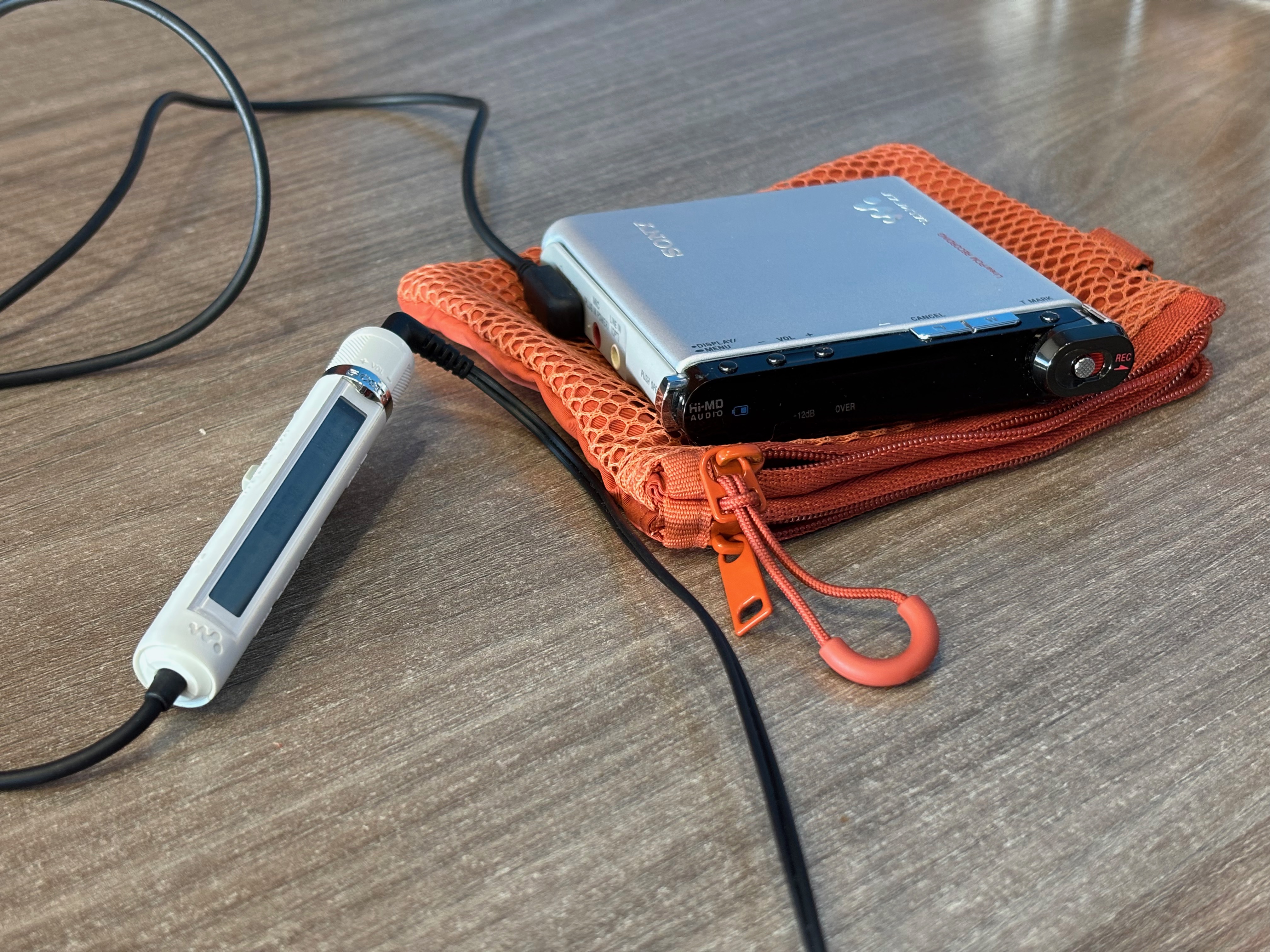 The unit can record digital or analog sources. I was able to record CDs from the digital input, from my computer using the digital input, and I did some field recording using an ECM-MS907 microphone using both auto leveling and manual gain control. It works fine, and the unit has a real-time-clock to show timestamps.
The unit can record digital or analog sources. I was able to record CDs from the digital input, from my computer using the digital input, and I did some field recording using an ECM-MS907 microphone using both auto leveling and manual gain control. It works fine, and the unit has a real-time-clock to show timestamps.
However, neither the period nor the modern software carries those timestamps through to exported recordings, so you need to transcribe them by hand if they matter to you.
People talk about the RH1 as if it's a swan song, with sources all over the Internet more or less repeating the minidisc dot org line that it's "the best executed minidisc instrument to date".
It's not. It's simply the newest. That it can rip is profoundly irrelevant these days, because with modern software, so can all Sony NetMD portables. And if you have some audio hardware and patience, it's possible to record an MD to a computer using any MD machine.
The RH1 isn't even the best HiMD machine. The MZ-NH1, despite being two years older, is significantly more pocketable, being smaller in at least two of its dimensions, has better onboard controls, and makes better overall use of the RM-MC40ELK for display of metadata and navigation of long discs.
If you could find-and-fix an RH1 for $200, I'd say have fun. It'll competently execute the classic format, and at $200 for a reasonably flexible machine with the modern software ecosystem's improved support for HiMD, you get some nice flexibility for longer playlists, longer albums, or other compilations. The HiMD format does work well, say, for ultra-long-haul road trips where you want a few albums in a row and repeating albums a few times over the course of the trip is fine or even preferable.
But an RH1 isn't $200. Working RH1s out of Japan, before the cost of a compatible remote, battery, or the replacement displays, are selling for $300 minimum on average, and I've easily seen them move for $700 or more. There's a couple on Yahoo Japan for $700, 800, and even $1,300. The units at the top of that price range won't move, but that they're real and the sellers think that's where to aim is telling. Guides for Buying From Japan - Reddit Post by the author and MiniDisc.Wiki's
You can probably find other HiMD machines cheaper, but getting into HiMD is knowingly getting into the most expensive part of the hobby, where despite almost every machine being cost-reduced and having some kind of pretty big drawback, it all costs several times what an equivalent MDLP machine would. HiMD also has the smallest overall choice of hardware available.
Zooming out, I think a worthwhile question is: What is it you like about MiniDisc? Why are you using this format. Were you looking for a format that lets you put a focus on single albums at a time? Are you looking to get better at making focused, themed playlists? Are you looking to enshrine the playlist of a moment in a physical form? The act of recording and doing your own editing? For the variety of different hardware for different use cases?
HiMD preempts all of that. The limits are gone. The focus is gone. Onboard editing is gone. For all intents and purposes, the physicality of the format is gone. Through the use of 1-gig discs and the middle or lower-bitrate formats, you could easily put a week or so's worth of music on a single disc and not have to touch discs for weeks on end.
If that's the vibe you want, that's great and it's a valid interest, but maybe an iPod, a flash or HDD Walkman, or any more modern file-based player, will be a better option.
The RH1 is a mid MP3 player from 2006 that happens to use a weird data storage format. It also serves double duty as a pro field recorder and as a transition tool for anyone whose only copy of a given piece of music is on MD. It's not really the best at any of those things, maybe minus being a transition tool, and you can argue that primarily because it was the only credible option in 2006.
SO, there it is. The RH1 is fine. If you absolutely must have an RH1 in particular, no other machine, even one that's objectively better or good enough but much cheaper, will fill that RH1-shaped hole. But I don't recommend it.
If you want field recording, or lossless, or to hold more music in a smaller space, you can do it better for less using more modern technology.
If you absolutely must have a HiMD machine, any other one will still be competently executed, cheaper, likely easier to use with a better overall interface, and may need less repair work.
If you specifically want in on MiniDisc, or you've been curious about HiMD: You should aim toward the base MD format or MDLP. For as much or less than what an RH1 will cost, you'll be able to get one or two portable recorders, a deck or a bookshelf unit, a portable player-only unit, at least one of which can be NetMD if you'd like, as well as secondary ecosystem such as a CD/DVD player or other digital audio hardware.